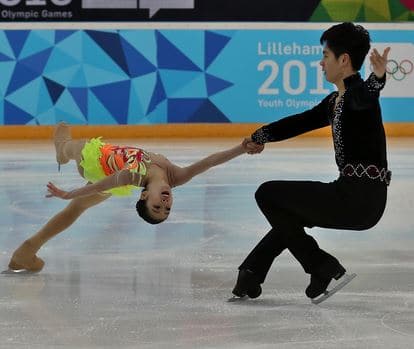
Although I struggle to understand or be entertained by many of the events in the Winter Olympics, I can appreciate the dedication and athleticism required to compete in some of them. I grew up in New England where I developed a strong aversion to anything snow related, and only appreciate ice when it is floating in a glass.
This post is inspired by the linked article The Brutal Neuroscience of Figure Skating: How Spinning Athletes Overcome Dizziness, which provides an excellent explanation of the physics and physiology of how Olympic skaters avoid dizziness when they do prolonged rapid spinning moves. I suspect there is a name for that spinny thing they do at the end of their routine, but like I say, ice sports do not entertain me so I don’t watch them. I think that is referred to as willful ignorance.
Here are some excerpts from the article:
In our inner ears, there are three fluid-filled tubes called “semicircular canals,” said Paul DiZio, a neuroscientist at Brandeis University who studies balance, motion and dizziness. Each one is aligned with a different axis of motion: up and down, left and right, and side to side.
“When you move your head, the fluid inside the tubes kind of flows a little bit,” DiZio told Live Science. “And then you’ve got these sensors — sensors that are like little pieces of seaweed inside the tubes — that kind of float with the fluid and sense what’s going on.”
Nod your head yes, and the sensors in one set of tubes spark to life. Shake your head no, and another set of tubes sends signals to the brain. Touch your ears to each shoulder, and the final set of sensors activates.
“Normally, the motions we make don’t last for too long,” DiZio said.
And rotational motion, in particular, tends to occur in short stretches of time — turning to look out the window, leaning your head back to crack your neck, that sort of thing. And our inner ears are built well for tracking that sort of motion.
When Mirai Nagasu hurls herself into a whirling triple axel, Nathan Chen hops balletically into the air and turns four times before landing, or Adam Rippon contorts himself through a series of fluid shapes while spinning his way on one skate through long measures of music, their wet inner ears— human beings’ motion sensors and the origins of most dizziness — slosh around just the same as mine in that rotating chair (or yours, if you gyrate fast enough).”
As a vestibular specialist, we see this phenomenon when performing rotational chair testing, which involves spinning patients at various speeds and recording the eyes responses. We do not spin them nearly as fast as a skater spins. Not even close. One of the tests we perform in the rotational chair is called Step Velocity test. In this test, we spin the patient in one direction for 45 to 60 seconds, then we stop the chair, Typically, the patient will feel the spinning sensation for about 10-15 seconds, then, even though the chair is still spinning, they have no sensation of movement until the chair stops. Once the chair stops, even though they are not moving, they feel as if they are spinning in the opposite direction for another 10-15 seconds.
This is explained by the fluid dynamics of the inner ear. As described in the article, the inner ear is very efficient for short, back and forth movements, but not prolonged rotational movements. After about 6 seconds of rotation in the same direction, the inner ear fluid has moved as much as it can, and basically “pegs” against the end of the stimulated semi-circular canal. The brain has the ability to prolong the sensation of movement for another several seconds, but eventually, the movement stops being registered. When the chair stops, the fluid that was “pegged” reverses direction and flows back into the canal, creating the sensation of movement for a short period of time.
The Step Velocity test measures not only the inner ears response, but also the efficiency of the brain. The linked article explores the techniques Olympic skaters use to train their brain to maintain orientation after a prolonged spin. Go USA!
*Photos courtesy of instructables.com, wikimedia commons







